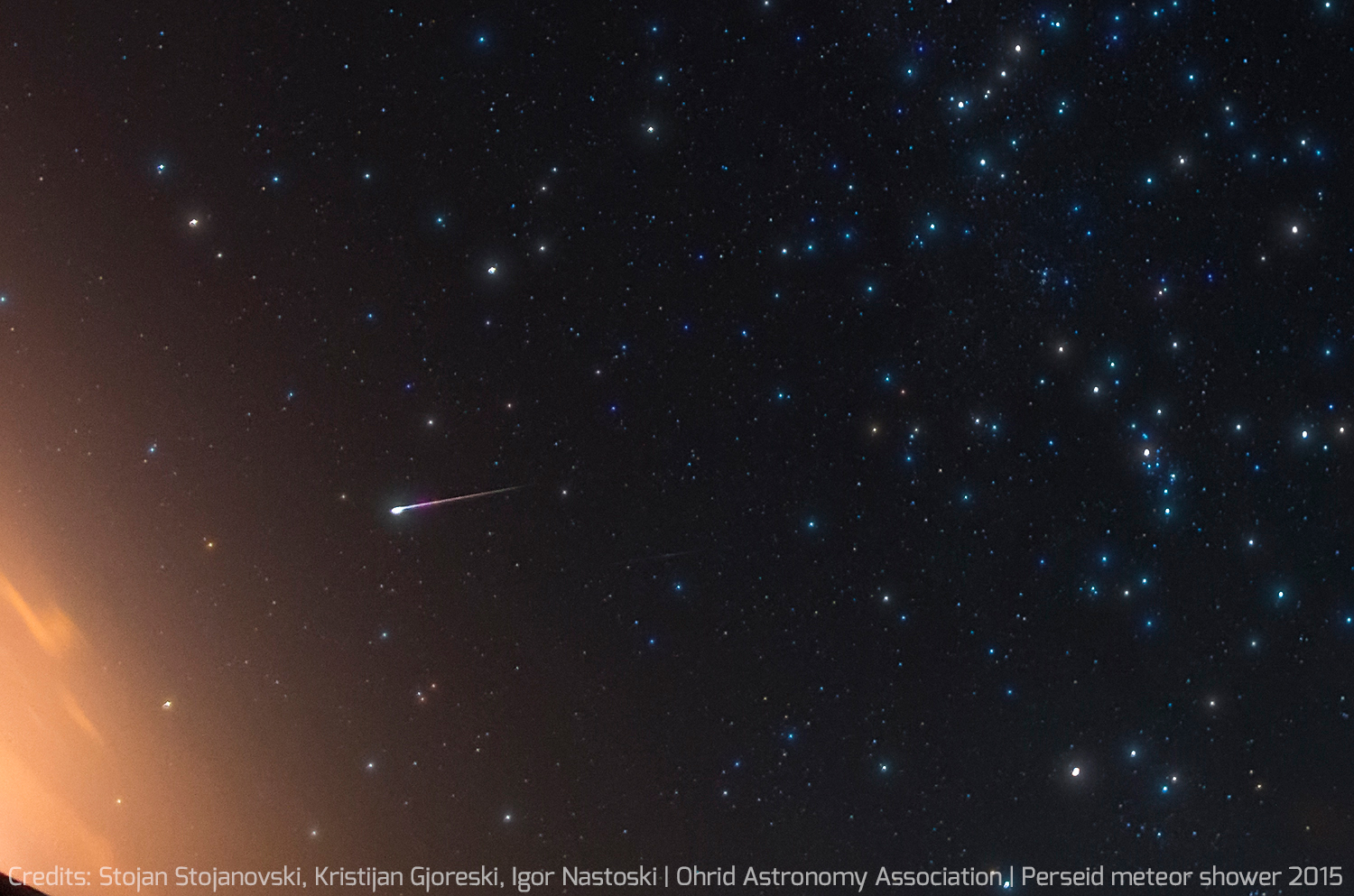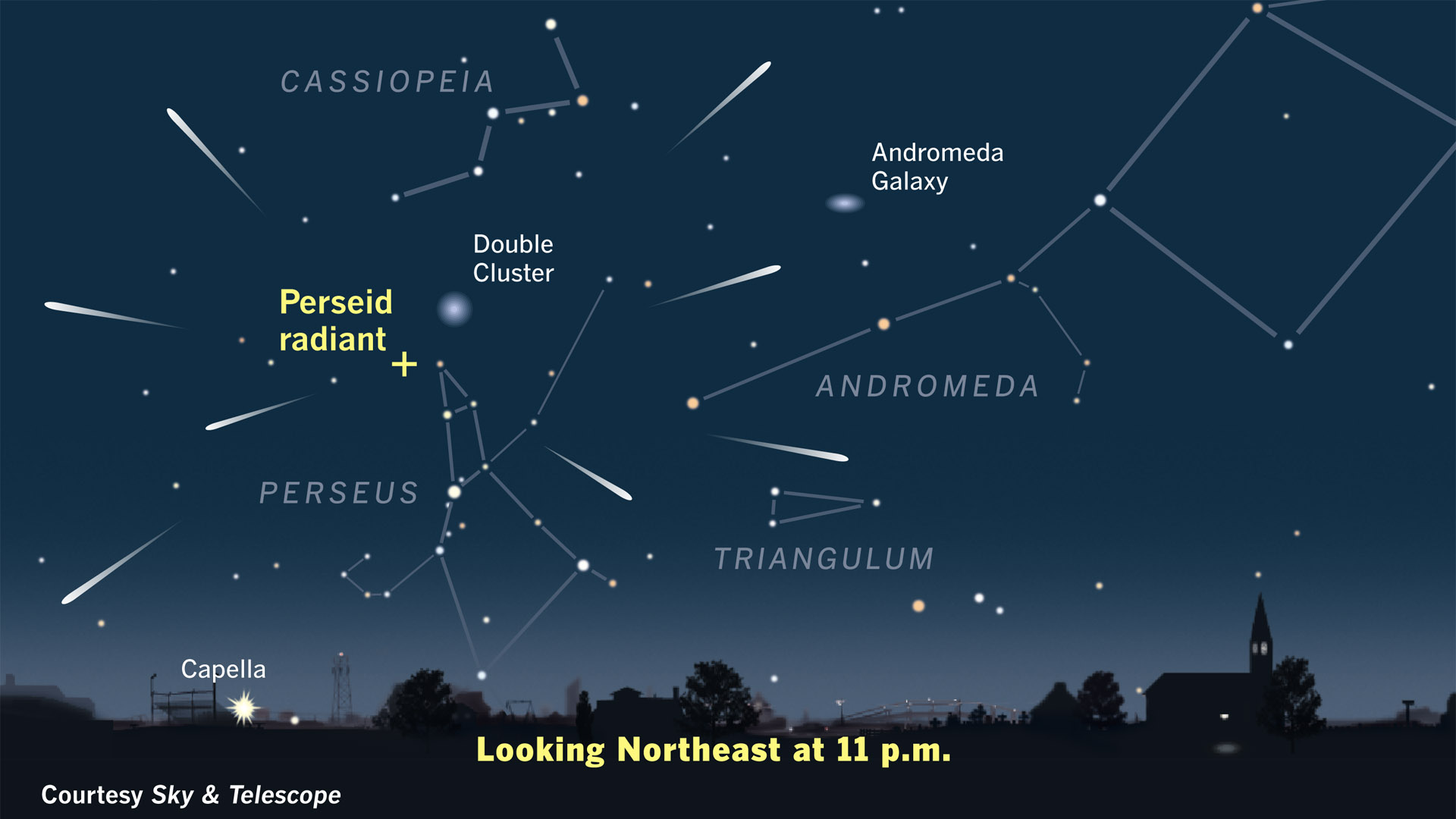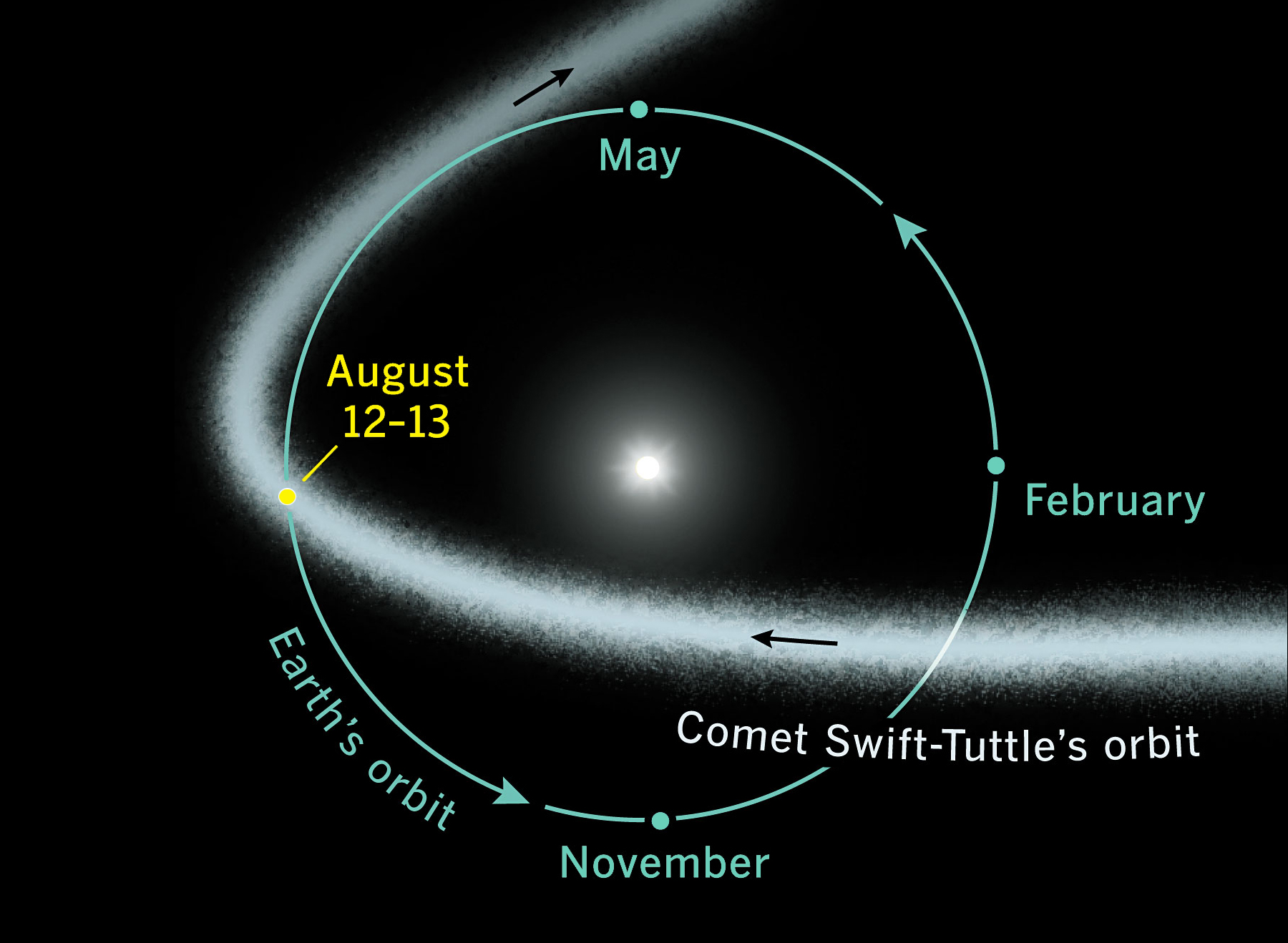The 2018 Perseid Meteor Shower Peaks This Weekend! Here's What to Expect

The new moon of August comes on Saturday the 11th this year, perfectly timed to bring dark, moonless nights around the peak of the Perseid meteor shower. Indeed, 2018 is an excellent year to watch for these meteors; such moonless-sky conditions are ideal for observing the Perseids.
Moreover, Earth should pass through the shower's richest part around 9 p.m. Eastern time on Sunday, Aug. 12 (0100 GMT on Aug. 13).
So, late that night into the predawn hours of Monday, Aug. 13, viewers in North America and Europe should have the best seats in the house. Late-summer campers should put their sleeping bags outside the tent to enjoy this "Old Faithful" of meteor showers. [Perseid Meteor Shower 2018: When, Where & How to See It]
You can also watch the Perseid meteor shower live online here at Space.com on Aug. 12 starting at 5 p.m. EDT (2100 GMT), courtesy of the online observatory Slooh.com.
The Perseids no longer hold the title of the "most prolific" of the annual meteor displays; the December Geminids now produce meteors in greater numbers. But the Perseids are still the most popular because they appear during balmy summer nights as opposed to the wintry Geminids.
Of course, the Perseids are not stars dropping from their fixed positions in the sky. Rather, they are tiny flecks of material that were shed by Comet Swift-Tuttle each time it swept past the sun. While meteors can be seen on any given night, the majority of meteors that are seen in mid-August skies belong to the Perseid stream. (See a visualization of the Perseids here.)
Comet Swift-Tuttle was discovered during the summer of 1862 by Lewis Swift, an amateur astronomer based in New York; and Horace Tuttle, a professional astronomer at the Harvard College Observatory. The comet has an orbital period of roughly 130 years and was last sighted in December 1992. Its next expected return is slated for August 2126.
Get the Space.com Newsletter
Breaking space news, the latest updates on rocket launches, skywatching events and more!
The comet has likely circled the sun many hundreds of times and has left a "river of rubble" in its wake. Because the respective orbits of Earth and Comet Swift-Tuttle nearly coincide in the middle of August, Earth ends up sweeping through this rubble river. As we plow through the debris field, these tiny pieces of comet dust ram through the upper atmosphere at 37 miles per second (60 kilometers per second). Friction with the atmosphere raises these particles to white heat and produces an incandescent trail of ionized gas, which dleads to tt the "shooting star" effect.
Viewing tips

As with all meteor showers, the Perseids will appear to diverge from a small spot ind the sky, called the "radiant" — in this case, it's the northern part of the constellation Perseus, located not far from its famous Double Cluster (hence the name "Perseids"). For much of the United States, the radiant is already above the northeast horizon as darkness is falling. If you're lucky, you might catch sight of a few Perseids as early as 9 or 10 in the evening. These forerunners stand out from the meteors later in the night because they produce long, bright paths across the greater part of the sky.
Such meteors are called "Earth skimmers" and often leave long-lasting trains in their wake. Earth skimmers are very distinctive because they follow a path nearly parallel to our planet's atmosphere, but during the evening hours, they tend to be few and far between. But after the stroke of midnight, meteor activity begins to noticeably ramp up because we're on the forward-moving side of Earth and are ramming straight into the Perseid stream. Meteor activity also picks up around this time because the radiant is climbing higher in the sky; from midnight until the first light of dawn, meteors may appear at rates of 60 to 90 per hour, and this frequency is another reason this display is so popular.
If, however, you live in a brightly lit city surrounded by obstructions such as tall buildings, you will see considerably fewer meteors. When I was a young boy living in the Throggs Neck section of the Bronx, I would watch for the Perseids from my backyard. My view of the sky was quite limited, and I also had to contend with nearby streetlights — so I usually averaged only about 10 Perseids each hour.
In later years, I did my Perseid watching from my aunt and uncle's house in Mahopac, New York, 55 miles (88 km) north of Midtown Manhattan, which, in those days (the early 1970s), was a very dark, rural location. When I watched from the south-facing deck of the house, my hourly meteor counts were much higher, on the order of 40 or 50. If I had positioned myself toward a different location where I could see more of the sky, I probably could have seen even more meteors. [Top 10 Perseid Meteor Shower Facts]
Great balls of fire!
It's not just the quantity, but the quality, of meteors that makes the Perseids so popular. Many of the meteors you will see are swift and rather bright, in the average magnitude range of 2 to 2.5, or about the brightness of Polaris (the North Star) or the brightest stars of the Big Dipper. The brighter streaks are usually tinged with a bluish or greenish hue, while fainter meteors tend to appear yellow or white.
About one-third of all Perseids leave luminous trains, which can persist from a few seconds to nearly a minute. Such outstandingly bright meteors are called fireballs. And according to Bill Cooke of NASA's Meteoroid Environment Office, the Perseids produce more fireballs than any other meteor shower. A few might end in flares or bursts resembling a strobe, capable of casting shadows. Such meteors are called "bolides."
If you have binoculars, you can prolong a meteor train's visibility. It's a fascinating sight to watch a meteor streak that starts off straight and true and within just a few seconds appears to twist and turn as it responds to high-level winds in Earth's upper atmosphere at altitudes of 40 to 50 miles (65 to 80 km).
One of the brightest Perseids I ever saw occurred back in August 1974, when I was observing the shower from the southern Adirondack Mountains with several members of the Amateur Observers' Society of New York. Here is my report, which appeared in the October 1974 issue of Astronomy magazine (page 39):
"I looked down at my tape recorder planning to insert a fresh cartridge, when it suddenly became illuminated by something which I thought at first was the dull light of one of my colleagues' heavily filtered flashlights. I instinctively looked up and was stunned by a great fireball in its final stage, moving almost due south into northern Sagittarius. The light emitted by this Perseid was intensely green and was estimated to be at least magnitude -10 (about the brightness of a first or last quarter moon)." [Photograph the 2018 Perseid Meteor Shower with These NASA Tips]
Final thoughts

The best piece of equipment for meteor watching is a long, reclining lawn chair, which you can lie on to get a wide-open view of the sky. If you stand and look upward for a long period of time, there's a fair chance that you'll find yourself nursing a stiff neck the following morning. And even though the calendar says it's midsummer, remaining stationary for a long time while lying down close to the ground can cause you to get chilled — and possibly coated with dew. Be sure to have a heavy blanket — or, better yet, a sleeping bag — on hand to stay warm. Some food and a warm beverage (no alcohol!) will keep you comfortable as well.
And it can be fun to watch for meteors with friends or even just a single companion. When I was watching for Perseids as a boy from the Bronx, my grandmother usually watched with me. We'd also have a radio tuned to a station that played dreamy classical music and popular orchestrations, which served as a fitting accompaniment to the show taking place above our heads.
If you're clouded out of the peak viewing night, don't worry; the Perseids will continue to be evident, albeit in diminished numbers, for almost another two weeks. Hourly rates average about one-half to one-quarter of the peak numbers for a night or two before and after. And the very last stragglers have been noted as late as Aug. 24.
As always, good luck, and here's to clear skies!
Editor's note: If you snap an awesome photo of Perseid meteors that you'd like to share with Space.com and our news partners for a potential story or gallery, send images and comments to spacephotos@space.com.
Joe Rao serves as an instructor and guest lecturer at New York's Hayden Planetarium. He writes about astronomy for Natural History magazine, the Farmers' Almanac and other publications, and he is also an on-camera meteorologist for Verizon FiOS1 News in New York's Lower Hudson Valley. Follow us @Spacedotcom, Facebook and Google+. Original article on Space.com.
Join our Space Forums to keep talking space on the latest missions, night sky and more! And if you have a news tip, correction or comment, let us know at: community@space.com.

Joe Rao is Space.com's skywatching columnist, as well as a veteran meteorologist and eclipse chaser who also serves as an instructor and guest lecturer at New York's Hayden Planetarium. He writes about astronomy for Natural History magazine, Sky & Telescope and other publications. Joe is an 8-time Emmy-nominated meteorologist who served the Putnam Valley region of New York for over 21 years. You can find him on Twitter and YouTube tracking lunar and solar eclipses, meteor showers and more. To find out Joe's latest project, visit him on Twitter.









